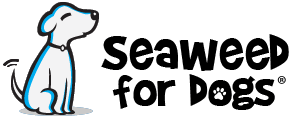Raw Bones For Dogs - Benefits and Safety Tips For Feeding
Share

Just like humans, dogs have to look after their teeth as well, in order to avoid gum problems, tooth decay and even bleeding. This issue here is, your dog can't look after his or her teeth without your help, as a dog owner it is your responsibility to be aware of the good and bad foods your dog is subject to.
PERIODONTAL DISEASE IN DOGS
Today, 9/10 dogs will have periodontal disease by the age of 3. Periodontal disease is a tooth disease which involves inflammation of one or more of a tooth's deep supporting structures which inevitably results in premature tooth loss and rotting of the gums. If food particles and bacteria accumulate and sit along the gumline, it can form plaque. When plaque forms and mixes with saliva and minerals, it transforms into calculus which then leads to gingivitis. Gingivitis is the first stage of periodontal disease and can be identified by a reddening of the gums directly bordering the teeth.
Once calculus starts developing and building up underneath the gum, it separates the tooth and gum creating a space for bacterial growth to foster. Once this process occurs, your dog has irreversible periodontal disease.
FEEDING RAW BONES TO DOGS
The first thing to note about feeding your dog bones is that they must always be raw. Never give your dog cooked bones (particularly chicken bones these can splinter very easily and kill even the largest of dogs). There are a huge amount of dangers you put your dog in if you feed them cooked bones, starting with broken teeth which leads to tongue and mouth injuries which results in a very large vet bill for you. A more serious problem from feeding your dog cooked bones is when small parts of the bone get looped around your dogs lower jaw bone which can be frightening for your dog and result in surgery, again an expensive trip to your vet. If bone parts don’t get stuck in your dogs lower jaw, they can get trapped in the windpipe, esophagus, stomach or intestine, all resulting in a trip to see your veterinarian. Severe rectum bleeding and or peritonitis are two more problems which can occur. Peritonitis is a very painful and difficult to treat bacterial infection of the abdomen caused from bone fragments poking holes in your dogs stomach or intestine and this can kill your dog.
Nutritional Benefits of Raw Bones
However, RAW bones are a fantastic source of nutrition and the benefits are endless. Primarily, they act as a natural toothbrush for your dog, removing all those lingering food particles and other opportunities for plaque to develop. Raw bones contain glucosamine, calcium, phosphorus and most contain omega 3 fats too. All of these vitamins will improve the health of your animals skin and joints and can also build firmer stools in your animal. Another reason to feed your dog raw bones is that it is satisfying and relaxing for your dog, distracting it and giving its body a rest from constant exercise, particularly for restless puppies.

Types of Bones to Feed Your Dog
Depending on the age, size and bone chewing experience of your dog, there are different animal bones recommended for you to feed your dog. For puppies of 10 weeks old, small dogs or beginner bone chewers turkey necks, duck wings and chicken wings are recommended. For dogs between 6-9 months, medium sized dogs or experienced starters in bone chewing, its recommended to feed them lamb ribs, lamb necks and chicken portions. Then, for dogs 10 months and older, big dogs or experienced bone chewers, marrowbone, beef knuckle bone and beef ribs are recommended.

Never Cut a Bone!
Another few things to remember before starting to feed your dogs raw bones is to never cut or saw a bone. If your dog is older, feed them softer bones such as turkey and duck neck. If you have more than one dog, always separate them before feeding them bones, dogs get very protective over their bone. And finally, try to avoid leaving your dog unattended while eating a bone, just in case anything happens.
Keeping to these rules and feeding in moderation, your dog shouldn’t have any reason to develop gum or teeth problems, as well as keeping your furry friend distracted, relaxed and happy!























